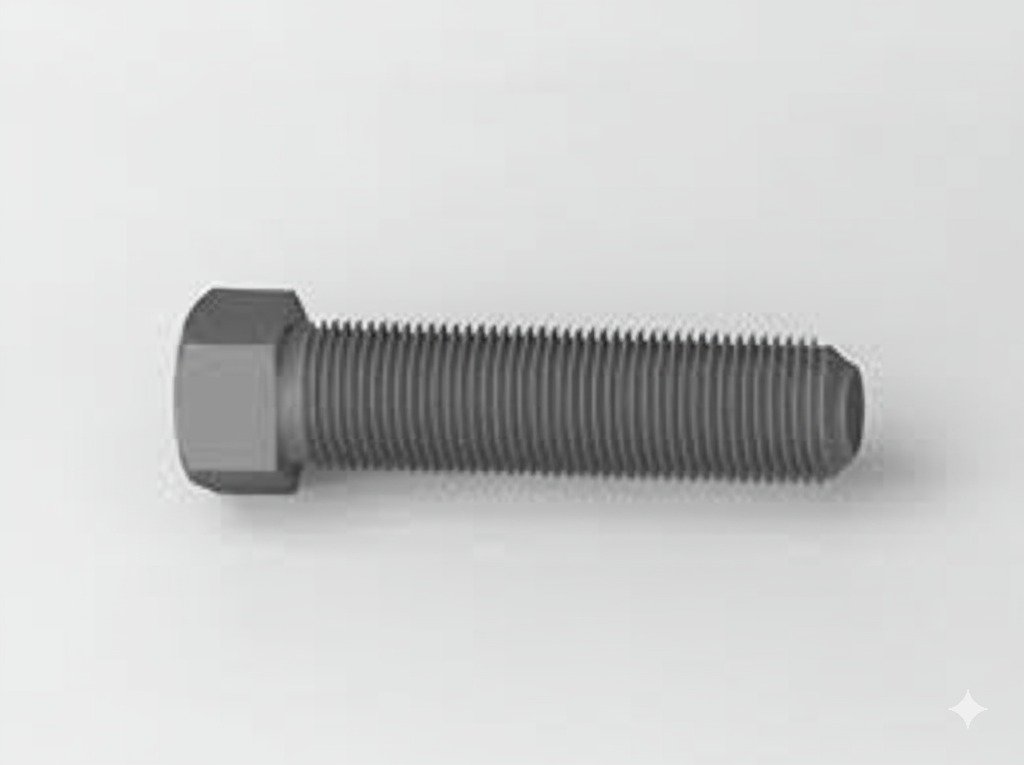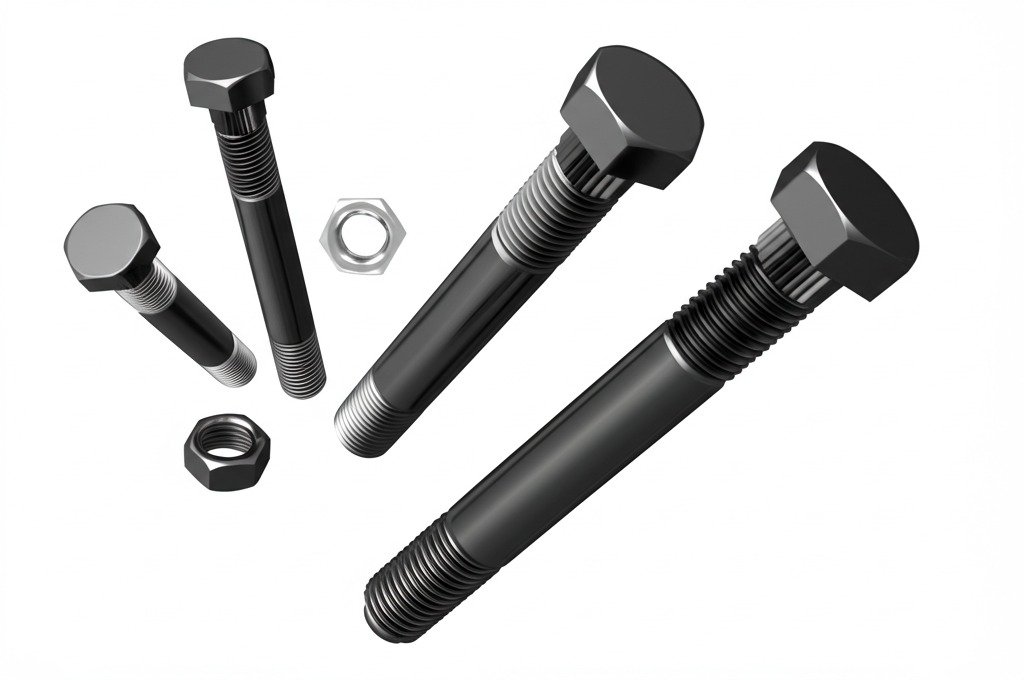By Nicolás Longo
(As an Amazon Associate we earn from qualifying purchases)
Bolt Sizes and Measurements: A Detailed Guide on How Bolts are Measured
Understanding how bolts are measured is essential for selecting the right fasteners in any construction, automotive, or industrial project. This comprehensive guide delves into the intricacies of bolt sizing—from head dimensions to thread types—ensuring you have all the information needed to choose the best bolts for your application. Throughout this article, we highlight the benefits of knowing bolt dimensions explained through various parameters such as 3/8 bolts, 3/4 bolts, 6mm bolts, 8.8 grade bolts, 10.9 bolts, 12mm bolts, 150mm bolts, and 200mm bolts. By breaking down the differences between metric and imperial sizes and clarifying bolt thread types, you can make informed decisions that maximize safety and performance.
Extensive research and field testing by engineering experts have yielded valuable data on bolt measurement standards. This article addresses common questions like “are bolts measured from the head?” and explains the procedure behind each measurement. Whether you are a seasoned engineer or an enthusiastic DIYer, understanding how bolts are measured will help you avoid costly errors and ensure optimal fastener selection.
How Are Bolts Measured?
The process of measuring bolts involves several key parameters that determine the bolt’s overall performance and suitability for various applications. The term how bolts are measured refers to dimensions such as diameter, length, thread pitch, and head size. Industry standards dictate that each component must conform to specific guidelines.
- Diameter: The bolt’s diameter is measured across its shank. For instance, common sizes include 3/8 bolts and 3/4 bolts.
- Length: Bolt length is usually measured from under the head to the end of the bolt. This measurement is crucial when precise fitting is required.
- Thread Pitch: This defines the distance between adjacent threads. Variations in thread pitch lead to different bolt thread types.
- Head Measurement: A frequent query is whether are bolts measured from the head. Typically, the length is calculated from beneath the head so that the head’s dimensions do not affect the fastening length.
- Additional Features: In many cases, bolt dimensions explained in technical sheets include detailed tolerances and grades (for example, 8.8 grade bolts and 10.9 bolts).
Following internationally recognized standards, such as those from ASTM or ISO, ensures that measurements are consistent across manufacturers. Resources like the Engineering Toolbox provide guidelines and calculators that help professionals verify the precision of their components.
Metric vs Imperial Bolt Sizes
In the world of fasteners, the distinction between metric and imperial (inch-based) bolt sizes is a critical factor. Understanding how bolts are measured in both systems can prevent compatibility issues and improve overall project outcomes.
- Metric Bolt Sizes:
Metric bolts are specified in millimeters. Common sizes include 6mm bolts and 12mm bolts, while longer bolts may be measured as 150mm bolts or 200mm bolts. Metric fasteners are standard in most regions outside the United States and offer precise dimensional tolerances. - Imperial Bolt Sizes:
In the imperial system, bolt sizes are stated in fractions of inches such as 3/8 bolts and 3/4 bolts. Measurements in this system often complement traditional manufacturing and construction practices in the United States. - Conversion and Compatibility:
One of the challenges in bolt selection is converting measurements accurately. Modern engineering software typically includes conversion tools that simplify the process. Despite differences, understanding how bolts are measured in both metric and imperial units ensures that you select the correct fastener. - Industry Applications:
The choice between metric and imperial sizes often depends on the industry, regional standards, and project requirements. For example, automotive manufacturers in Europe typically use metric fasteners, while construction projects in the United States may favor imperial measurements.
Comparative data from resources such as ISO Standards and ASTM International confirm that both measurement systems can achieve high precision when proper methodologies are employed.

Understanding Bolt Thread Standards
A crucial part of understanding how bolts are measured lies in their thread standards. Bolt thread types significantly affect the fastener’s performance, influencing factors like grip strength, ease of installation, and overall durability.
- Thread Pitch and Profile:
Bolt thread types refer to the specific shape and spacing of the threads. Coarse threads are typical for quick assembly, while fine threads provide a stronger grip in applications requiring high precision. - Measurement Techniques:
Bolt dimensions explained in technical documents include both the major and minor diameters of the thread. These parameters ensure that the mating nut or tapped hole fits securely. - Standard Thread Forms:
The most common thread profiles include Unified Thread Standard (UTS) for imperial sizes and ISO metric threads for metric sizes. Resources like Bolt Science offer detailed explanations and visual guides to these standards. - Are Bolts Measured From the Head?
It is important to note that the measurement of bolt length is typically taken from just beneath the head, ensuring that the head itself does not interfere with the functional length. This method is widely accepted in engineering practices. - Specific Sizes and Grades:
Technical specifications for bolt thread types also address special cases, such as 8.8 grade bolts and 10.9 bolts, which denote the bolt’s strength relative to its material composition. Details are often provided for various diameters, like 6mm bolts or 12mm bolts, as well as longer fasteners like 150mm bolts and 200mm bolts.
Accurate understanding of thread standards is crucial for proper assembly and load distribution. Detailed explanations and diagrams available in technical references ensure that professionals can rely on consistent measurements when specifying bolts.
- Diameter: 1/4-Inch
- Length: 1-Inch
- Material: Steel

- 【Metric Flange Bolt Assortment】This is nice selection of metric flange head bolts of the most common lengths along with …
- 【10.9 Alloy and Black Galvanized】This flange bolt kit is crafted from 10.9 grade alloy steel with a durable black galvan…
- 【Time & Money Saver】Great bins for storage with a size chart on the inside and outside. Compared to the time it takes to…

- Model: M4x50mm Material: 304 Stainless steel Screw Length: 50mm/2″ Pitch: 0.7mm / 0.03″ Screw Head Dia: 8mm / 0.31″ Scre…
- Package Content: 20(+-2%)Pcsx Machine Screws; Product Name: Machine Screws Bolts ;Color: Silver Gray
- Pan head machine screws, Phillips drive. Metric machine screws for universal use

Advanced Insights and Comparative Analysis
In practical applications, knowing how bolts are measured goes beyond simple dimensions. It requires an analytical approach to compare how different sizes and thread types impact performance under various conditions.
- Material and Tolerance:
Research indicates that bolts with tighter tolerances and standardized dimensions yield higher performance in load-bearing applications. For example, a precise 3/8 bolt in an automotive assembly may provide a more secure connection than one with inconsistent measurements. - Installation Factors:
Installation practices, including torque application and alignment, are critical for fastener performance. Studies published in the Journal of Mechanical Engineering demonstrate that correctly measured and installed bolts reduce maintenance costs and improve longevity. - Comparative Data:
Data from multiple sources confirm that adhering to standards for bolt dimensions, such as those specified in ISO and ASTM guidelines, leads to consistent performance. Detailed charts comparing bolt sizes—from 3/8 bolts to 3/4 bolts and from 6mm bolts to 12mm bolts—help industry professionals select the appropriate fasteners. - Practical Implications:
The decision-making process regarding bolt selection is heavily influenced by accurate measurements. Whether selecting an 8.8 grade bolt or a 10.9 bolt, understanding how bolts are measured provides a strong foundation for achieving optimal assembly and safety.
These insights are reinforced by technical documentation from recognized standards organizations. By leveraging both qualitative and quantitative data, engineers and procurement specialists can ensure that every bolt meets the stringent requirements of modern applications.
Practical Tips and Recommendations
For a successful fastener selection and application, consider these practical tips:
- Verify Measurements:
Always double-check bolt dimensions against manufacturer specifications. Use calibrated measuring tools to ensure accuracy. - Follow Standard Guidelines:
Adhere to guidelines provided by ASTM, ISO, and industry experts to maintain consistency. - Document Fastener Data:
Keep detailed records of bolt sizes and thread types used in your projects to facilitate maintenance and troubleshooting. - Use Conversion Tools:
If working between metric and imperial units, rely on trusted conversion tools to avoid errors. - Consult Industry Literature:
Resources such as Engineering Toolbox and Bolt Science provide comprehensive data and visual guides.
These recommendations empower you to effectively use accurate measurements in selecting bolts that ensure safety and performance.
Strategic Considerations for Fastener Selection
To optimize your projects, strategic thinking is essential. When understanding how bolts are measured, consider the following:
- Quality Over Quantity:
Investing in high-quality bolts with strict adherence to measurement standards often results in longer-lasting installations. - Customization Needs:
Some projects may require custom bolt sizes. Consult with your supplier to obtain the exact dimensions needed. - Integration With Assembly Processes:
Ensure that the bolt measurements align with your overall assembly process to reduce delays and improve efficiency. - Industry Standards Compliance:
Regularly review updates from ASTM and ISO to stay current with changes in fastener specifications. - Cost-Effective Procurement:
Analyze bulk purchasing options and negotiate with suppliers based on standardized bolt measurements to achieve long-term cost savings.
Adopting these strategic practices can significantly enhance the reliability and performance of your assemblies, ensuring that every bolt fits perfectly and functions as intended.
Final Analysis and Key Takeaways
Accurate bolt measurements are the foundation of secure and efficient assemblies. This guide has provided a detailed examination of how bolts are measured, covering crucial aspects like bolt thread types and the differences between metric and imperial sizing. By understanding that bolt dimensions are explained through careful measurements such as diameter, length, and thread pitch—and recognizing that measurements are typically taken from just below the head—you can avoid common installation errors and enhance system integrity.
Whether you are working with 3/8 bolts, 3/4 bolts, 6mm bolts, 8.8 grade bolts, or longer sizes like 150mm bolts and 200mm bolts, this comprehensive analysis provides the insights necessary for informed decision-making. Leveraging these details will lead to better performance, reduced maintenance, and more efficient use of resources.
“As an Amazon Associate we earn from qualifying purchases.”



